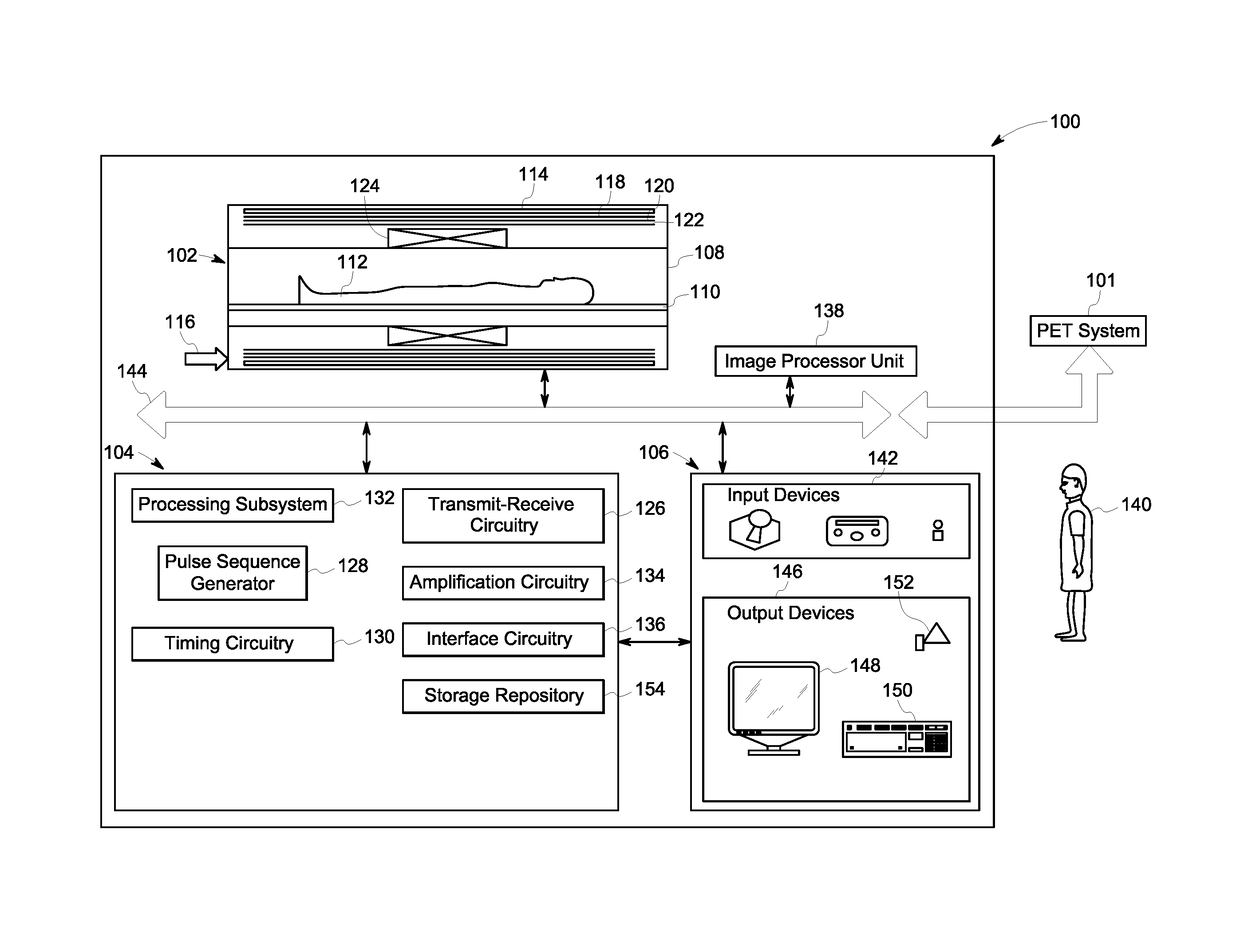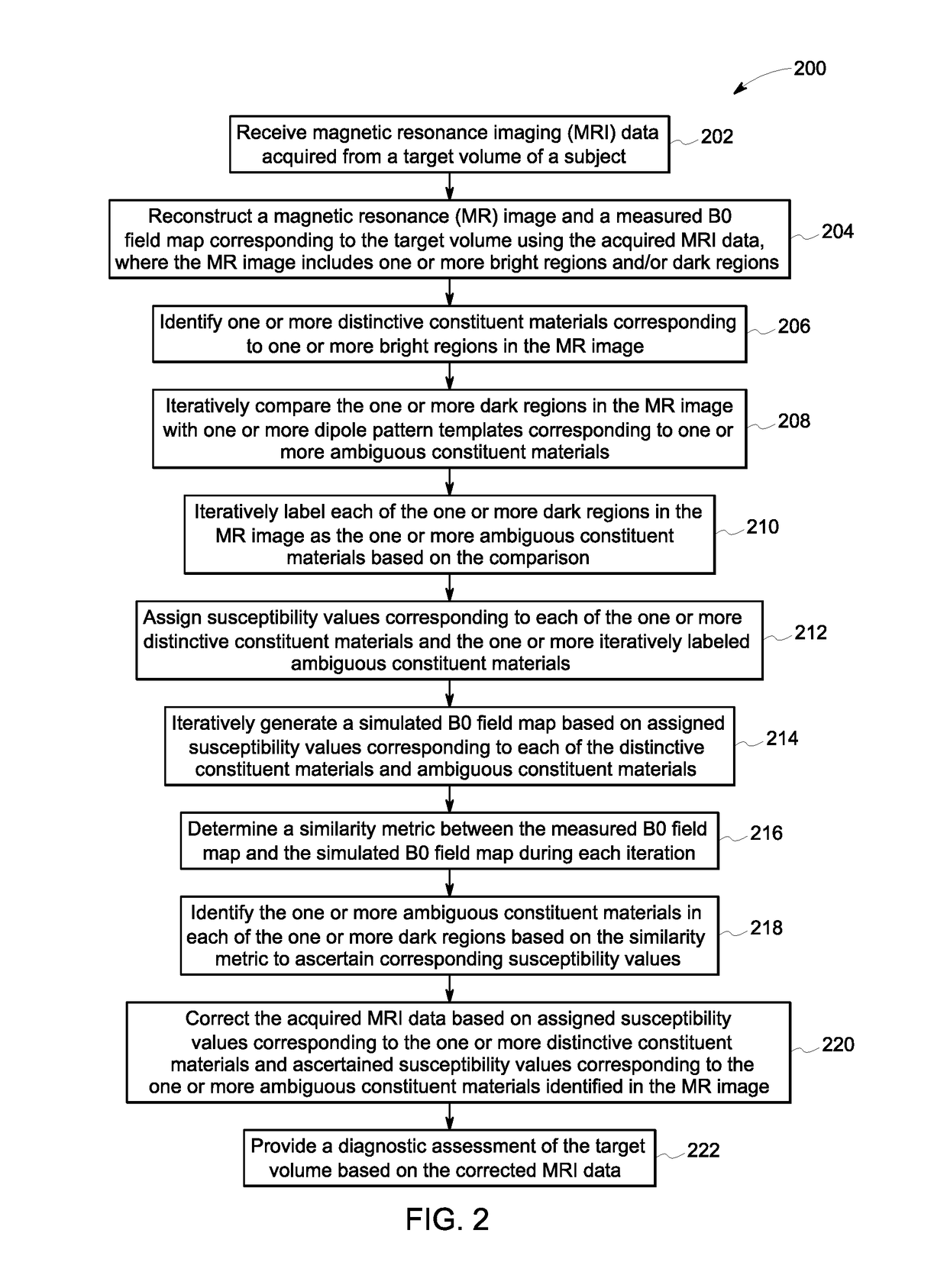Method and system for improved classification of constituent materials
a constituent material and classification technology, applied in the field of diagnostic imaging, can solve the problems of affecting the quality of the image, the inability of conventional mri to generate response signals with such distinctive signal intensities, and the inability to detect the presence of a single constituent material in the image,
- Summary
- Abstract
- Description
- Claims
- Application Information
AI Technical Summary
Benefits of technology
Problems solved by technology
Method used
Image
Examples
Embodiment Construction
[0017]The following description presents a system and method for accurately classifying constituent materials in a target volume of a subject. Specifically, embodiments described herein allow for accurate identification of constituent materials that are traditionally indistinguishable using conventional magnetic resonance imaging (MRI). In particular, embodiments of the present system and method provide an improved MRI workflow to differentiate a metal-induced signal loss from a signal loss caused by air and / or bone, thereby localizing and / or identifying metal objects located in the target volume with greater accuracy.
[0018]According to certain aspects of the present specification, regions including metal objects may be differentiated from air and / or bone using a combination of magnitude and phase images obtained from acquired MRI data and / or B0 field maps. It may be noted that a B0 field map corresponds to a map of off-resonance frequencies that are generated due to inhomogeneity i...
PUM
 Login to View More
Login to View More Abstract
Description
Claims
Application Information
 Login to View More
Login to View More - R&D
- Intellectual Property
- Life Sciences
- Materials
- Tech Scout
- Unparalleled Data Quality
- Higher Quality Content
- 60% Fewer Hallucinations
Browse by: Latest US Patents, China's latest patents, Technical Efficacy Thesaurus, Application Domain, Technology Topic, Popular Technical Reports.
© 2025 PatSnap. All rights reserved.Legal|Privacy policy|Modern Slavery Act Transparency Statement|Sitemap|About US| Contact US: help@patsnap.com



